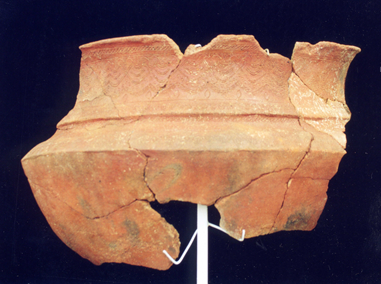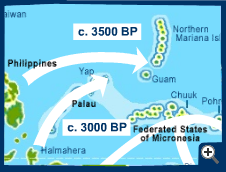The Canoe Is the People
Indigenous Navigation in the Pacific
Archaeological Account
By about 50,000 years ago people had migrated from SE Asia to Australia and Papua New Guinea. Many thousands of years ago, the sea was much lower than today. A lot of the world’s water was frozen in glaciers GLOSSARY glaciers - large area of slow-moving ice on the continents GLOSSARY continents - large area of continuous land . The earth’s climate became warmer around 17,000 to 18,000 years ago, and again between 11,000 and 13,000 years ago. The ice slowly melted, and the new Water covered the lowlands. This created new islands. People whose homes and gardens were flooded had to move and begin a new way of life. Some went inland. But, about 6,000 years ago, the ancestors of today’s Pacific Islanders began voyaging to previously uninhabited islands to the south and east. By 3,000 years ago they became canoe people who travelled and traded between islands as far away as the central Pacific.
Through time, some islands rose and some fell due to underwater earthquakes and sea level adjustments. Today, people tell accounts of big floods and about islands being formed – sometimes fished up. These stories could be about what happened thousands of years ago.
Linguists GLOSSARY linguists - people who study languages and archaeologists GLOSSARY archaeologists - people who study ancient living places and artifacts (objects made by people) are beginning to learn where and how people lived through the flooding times, and why they moved: to find new homes, to trade, to fish, to visit relatives, to find a wife or husband, and even to escape a fight or attack another island. To learn when people were in a place, archaeologists date objects that people used by measuring the age of radiocarbon in them. Human bones can be tested for genetic makeup that reveals their ancestory. use radiocarbon dating GLOSSARY radiocarbon dating - measuring the rate of decay of radioactive carbon in objects to work out their age on objects that they find there, and DNA.



Lapita pottery
Photo © Christophe Sand
Peopling of the Pacific
People left the Asian continent and arrived in Taiwan about 27,000 years ago. Between 4,000 and 6,000 years ago people who spoke Austronesian languages were sailing out from SE China to Taiwan, Northern Philipines, and beyond.
4000–3000 years ago
The first islands reached in the tropical northwest Pacific were Palau, Yap, and the Marianas. The people who came to Palau and Yap to fish and garden may have been from nearby Halmahera (in Indonesia) and northwest New Guinea. The people who reached the Marianas from the Philippines sailed over 2500 km – the longest open sea crossing in the world until that time! The Marianas had bad droughts (long periods with little or no rain) and storms, but the reefs were full of fish, turtles, and shells that were valuable for trading. To learn more...

Peopling of the Pacific






